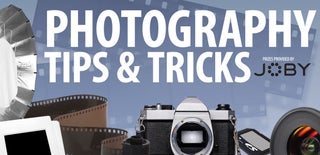Introduction: GoPro Gadgets and Film Strategies
My brother and father are going on a journey through Mongolia. They are bringing various cameras and many gadgets to create interestingly angled photos and take videos. So, with the travel contest and photography tips contest in mind, I decided I should make an Instructables on their different forms of photography.
Step 1: The GoPro
My brother has had a GoPro Hero 3 White Edition Camera since it came out. Wherever he goes, his GoPro goes with him. He has used it for underwater snorkeling, basketball trickshots, cross continental bike trips, and much more.
For this instructable I will explain the various mounts and accessories he uses to capture great photos or videos.
Step 2: Simple GoPro Gadgets
My brother mounts the GoPro to all sorts of things in order to provide a variety of angles for his videos. The GoPro, inside its case, can lock into simple mounts and go on various body parts or mechanisms.
The most simple mount is a small adhesive square mount that can be stuck to anything, usually a helmet, allowing for POV (point of view) shots.
Another useful tool the GoPro works well with is the tripod. Smaller (magnetic) tripods can be placed in unusual places, and allow the GoPro to create stunning time-lapses or videos.
Other body gadgets such as the chesty harness and the head strap mount allow other angled film/pictures during activity.
Step 3: DIY 360 Degree Swivel Mount
A 360 degree swivel mount is a large gadget recently invented to sit on top of a helmet and rotate in a circle around the person being filmed. You can buy this gadget expensively online for around 50 - 200 dollars, or you can DIY at home for less than ten.
Materials:
- 1 Castor Wheel With Bolts (you can buy these at a Home Depot, or you can take it off an old rip stick)
- 4+ Cable Ties
- 2 (Retractable) Selfie Sticks or 1 long 3/4" diameter plastic pipe
- 1 GoPro Tripod Mount
- Counterweight (the counterweight shown is a 2nd GoPro and a second mount)
- A Helmet with Holes or Vents
- An Adjustable Wrench
- A Drill
*Optional*
-Rubber Bands
Step 4: Attaching the Swivel
For this step, you will need the cable ties, drill, castor wheel, adjustable wrench, selfie sticks, rubber bands (if you have them), and helmet.
First, drill a hole through one of the selfie stick's handle.
Second, undo the bolt on the castor wheel with the adjustable wrench. Keep the Bolt and Nut!
Third, take out the wheel and replace it with the selfie stick. Push the bolt through the selfie stick. Put the nut back on the bolt.
Next, take two long cable ties and string them through the holes in the base of the castor wheel. Put the ends of these cable ties through the top most holes in the helmet and "tie them."
Once the swivel is firmly attached to the helmet, take the other selfie stick and put it on top of the one bolted into the castor wheel facing in the opposite direction so that the handles overlap. Join them together at the handles with the other two cable ties (and/or rubber bands) tightly.
Step 5: Attaching the GoPro
The Second Part:
You will need for this step: The GoPro, a GoPro tripod mount, and a counterweight.
First, take off the selfie stick head (the parts that hold the phone) and add the GoPro tripod mount.
Then, attach the GoPro with a screw/attachment to one side.
Next, put an equal counterweight on the opposite side/selfie stick
Put the Helmet on and make sure it works!
Step 6: Aerial View
Personally, I think the best way to get a photo is in areal view. For My brother's Mongolian journey, he bought a cheap drone and spy camera to film himself biking. My dad sanded off the plastic lip that is on the tab to reveal the battery, and put velcro there. He put velcro on the camera too and stuck the camera on the drone.
Syma X5 (quadcopter) + Spy Camera were only around $60

Participated in the
Photography Tips and Tricks Contest

Participated in the
Travel Tips Contest













